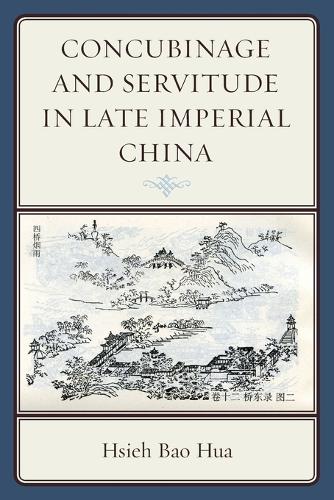
Concubinage and Servitude in Late Imperial China
(Paperback)
Available Formats
Publishing Details
Concubinage and Servitude in Late Imperial China
By (Author) Hsieh Bao Hua
Bloomsbury Publishing PLC
Lexington Books
24th March 2017
United States
Classifications
Professional and Scholarly
Non Fiction
Asian history
Sociology: work and labour
306.3620951
Physical Properties
Paperback
396
Width 150mm, Height 230mm, Spine 29mm
590g
Description
In the long course of late imperial Chinese history, servants and concubines formed a vast social stratum in the hinterland along the Grand Canal, particularly in urban areas. Concubinage and Servitude in Late Imperial China is a survey of the institutions and practice of concubinage and servitude in both the general populace and the imperial palace, with a focus on the examination of Ming-Qing political and socioeconomic history through the lives of this particular group of distinct yet associated individuals. The persistent theme of the book is how concubines, appointed by patriarchal polygamy, and servants, laboring under the master-servants hierarchy, experienced interactions and mobility within each institution and in associating with the other. While reviewing how ritual and law treated concubines and servants as patriarchal possessions, the author explores the perspectives available for individual concubines and servants and the limitations in their daily circumstances, searching for their positional powers and privilege of the inferiors in the context of Chinese culture during the Ming-Qing time period. For a list of the book's tables and their sources, please see: http://www.wou.edu/wp/hsiehb/
Reviews
Hsiehs book examines concubinage and servitude in the Ming and Qing Dynasties, first among Chinese society in general and then in the imperial court. In this study, however, Hsieh ambitiously expands her discussions to include the Qing, which means necessarily addressing the issues involving not only Han Chinese, but also Manchu and other ethnic groups, especially men and women in the banner system. Moreover, she addresses not only concubinage but a wide variety of servitude involving women, men, and eunuchs. In fact, some of the best discussions in the book come from Hsiehs comparison of how the differences between the Ming and Qing palace women would have contributed greatly to understanding the functioning of the inner courts of the two dynasties and the political power struggles that affected the entire country. * Nan N: Men, Women and Gender in China *
Author Bio
Hsieh Bao Hua is professor of history at Western Oregon University.
